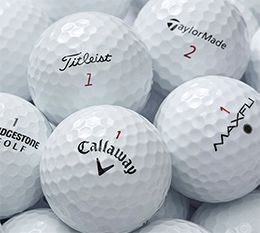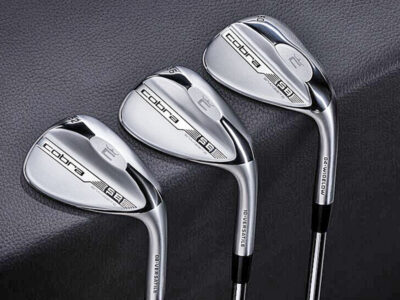From the staff at Miles of Golf, Ypsilanti
Editor’s note: There are three overall levels of golf ball styles, construction and pricing. This broad overview below is backed up by Miles of Golf testing and you can find extra details on many types of golf balls using the link at the end of this story.
Tour Performance Golf Balls
Tour caliber golf balls are the most advanced golf balls on the market today. They feature multi-layer construction consisting of three to five layers (core, mantel, cover, etc.) which allow the ball to perform best with all clubs. Some golf balls have multiple mantel layers to provide feel and higher launch angles as the loft of the club becomes lower.
The Urethane cover of a tour ball may be the most important feature. Urethane is soft and creates friction between the ball and the club faces. This becomes increasingly important as the player gets to their highest lofted clubs, creating the most amount of spin and the lowest launch for the best green side control possible. Combining these features give players of all skill levels the greatest opportunity to score from tee to green.
Low spin and great ball speeds off the driver and control and feel around the greens make these golf the most complete in the sport.
Examples of Tour balls:
Titleist ProV1 and ProV1x
TaylorMade TP5 and TP5x
Callaway Chrome Soft, Chrome Soft X and New Chrome Soft X LS (low spin)
Srixon Z-Star and Z-Star XV
These are a few examples of Tour level golf balls on the market. Other companies that offer tour balls with multi-layered construction and a urethane cover are: Wilson Staff, Bridgestone, Volvik, and Mizuno Golf.
From tee to green there is no better choice than a tour caliber golf ball. The technology that exists in these products is second to none and can benefit any level of golfer. If the price is justifiable, play a multi-layered construction tour ball and bomb it off the tee, hit it high with the mid & long irons, have great feel and spin in the short game. With these characteristics you will be sure to be the best version of yourself. Test them and see which one fits you.
Performance Golf Balls
The performance golf ball category is for the player that wants a quality golf ball that will be consistent enough for their game, but not break the bank. These are generally your 3-piece construction golf balls offering a good mix of launch and distance off the tee with solid spin around the green. One of the big things to look at when choosing a performance ball is the cover. There are typically three cover material options: surlyn (plastic), ionomer and urethane. Urethane cover golf balls offer the closest thing to a tour ball in terms of performance.
Here are some examples:
Titleist: Tour Speed (TPU cover) & Tour Soft (Surlyn)
Callaway: ERC Soft (Hybrid Cover featuring PARALOID)
TaylorMade: Tour Response (Urethane) and Soft Response (Ionomer)
Bridgestone: E12 Contact (Surlyn)
Srixon: Q Star Tour (Urethane with SeRM) & Q Star (Surlyn with SeRM)
Value Golf Balls
When choosing a golf ball there’s always the question of performance vs price? Most people would say they want good performance, but they don’t want to pay $50 for a dozen balls. The “value” golf ball is a perfect fit for this kind of player. A ball that will be long off the tee and have a soft feel around the greens but doesn’t hurt your soul when you lose it in the woods.
Most of the golf balls in this category are of a 2-piece construction, meaning there’s a core and a cover. Typically, there are two styles of balls in the category; High compression and low compression. High compression balls have a slightly firmer core which gives higher ball speed off of the driver but lacks in feel around the greens. Low compression golf balls have a slightly softer core giving them great feel around the greens but slightly less energy transfer off of the driver.
For details on each ball listed above, go here: https://www.milesofgolf.com/2021-golf-ball-buyers-guide/










